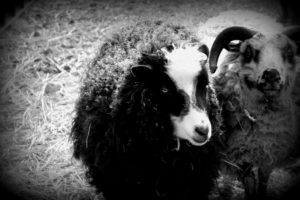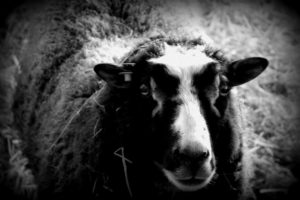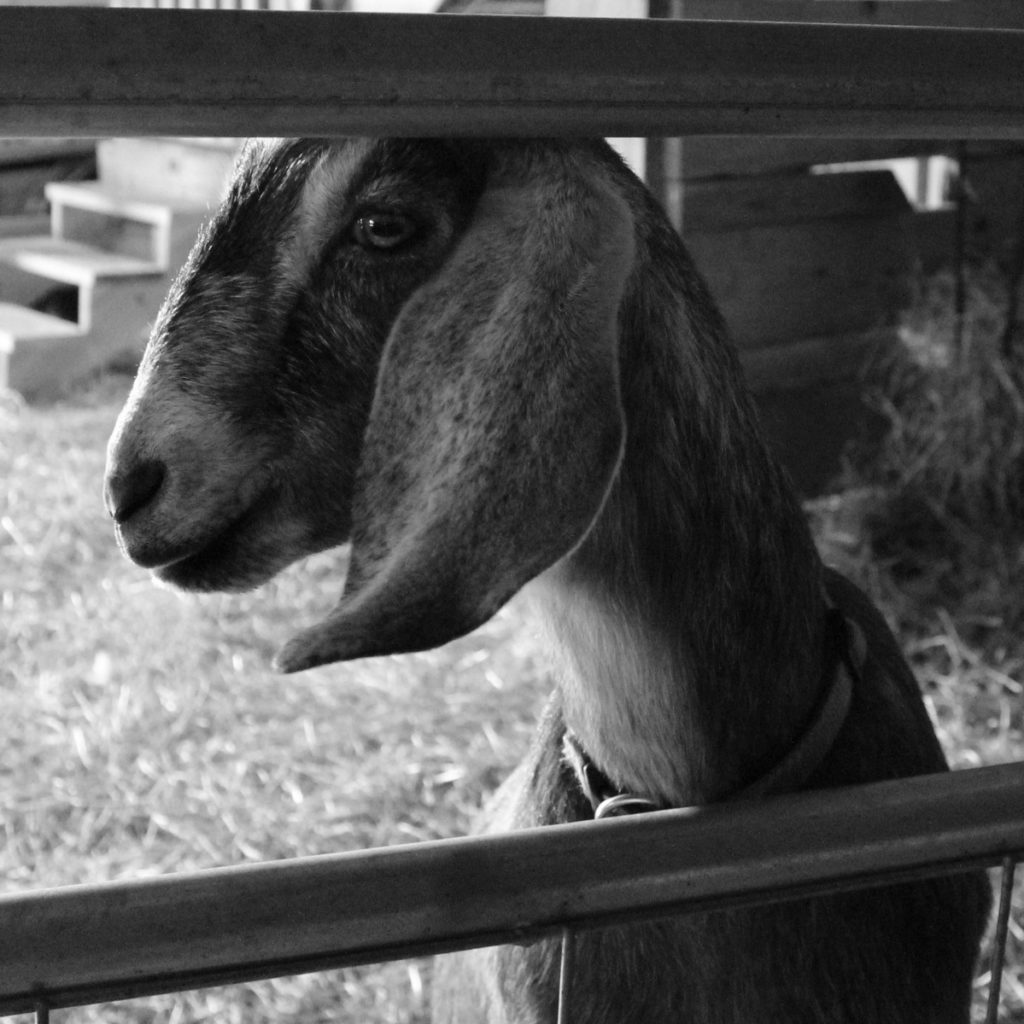The Dance of Farming
An earlier version of this article was written in October 2011 for our farm blog. October 2012 marked our second year of life at Rod and Staff Farm. As I re-read it and look around us, I remain amazed by how far we’ve come in what feels like such a short time. The seasons seem to fly by us, each one as full, as challenging and as rewarding the one before it.
October 15, 2011 marked our one year anniversary at our dream farm. It went by so fast! Last year at this time I was feeling upset and unsettled, surrounded by our things and completely disorganized. We insanely managed to piece things together enough to have a house warming only a week after we moved in. God blessed us with a beautiful and sunny autumn day for the occasion. Last year at this time our barn was cleaned out and filled with fall-colored paper lanterns, tables, food and friends. Our goals for the coming year were just a dream and a huge unknown.

Half-Moon & Chico, a Shetland ewe and ram. Photo by June Bartos.
Although I grew up in the country and my uncle was a dairy farmer, hands-on livestock experience was new to me. It was ALL totally new to my husband. I spent all of last fall and winter buried in books, talking to other farmers and researching myself into a state of research paralysis. My husband and I talked and discussed and planned. I made Gantt charts and timelines, lists and calendars.
No one is more stunned than I am that we actually did it. We met and completed our goals for this year. My husband is of course the manifester of my many visions. He takes all the research and ideas and makes them concrete, three-dimensional and real. I tend to hash out the ideas and think more globally, working out the details as we go. We’re an awesome team. And I’m so grateful for that. We framed out stalls, built a solidly engineered chicken coop, purchased our starter stock, built a chicken tractor, hashed out the logistics of feed (where to buy it) and hay (how to get it in the barn), built a small greenhouse, installed fencing; and of course, we made more plans.
What I’ve learned this year is that farming and working with livestock is so much like learning to dance. When you first walk in the room it seems that everyone is better than you. They all know so much more and you feel overwhelmed. You are bogged down by the sense that it will take a lifetime to learn those steps. Then as you start to learn you feel clumsy and step on a few toes. You are hardly graceful. But the more you practice, the easier it gets and eventually you get into a rhythm. Before you know it, you realize that you are actually dancing and even more so, enjoying it.
The differences are that God and Mother Nature dictate which song is going to be played and missteps can result in more than hurt toes; they can result in losses big and small. You try not to make any, but they are inevitable. In order to know which steps to take you need to be listening as the band is cuing up and watching not only the other dancers, but the creatures and land in your charge.
It is difficult, if not impossible, to not feel a connection to the land and animals in your care. You watch and shepherd them, sometimes from birth all the way to adulthood. They watch you. There isn’t anything in your daily dance steps that doesn’t affect them. Suddenly you find yourself concerned and watchful of things that in the past were simply lost in the daily grind, like how hot, cold, wet or dry it is. You are mindful of the condition of the grass, when to mow, the texture of the soil and the price of corn. Wild animals in nature that were once considered a cute novelty are now suddenly creatures to be wary of.
I spoke with someone a couple months ago and we discussed how many years earlier she and her husband had purchased land and an old farm to “have a horse or two.” In the years since they have greatly expanded beyond that idea. She said, “You know, the land and the farm, it makes you feel responsible, like you have to do something with it.” She is so right. The land, the earth, the animals – they feel the rhythm even more than you, and when you get in on it you feel like you’ve been kept out of a well-known secret for the longest time, and it imbues in you a joy in simple being that can’t be described.

Onyx, a Shetland ewe. Photo by June Bartos.
Everyone I meet on the “outside” can’t imagine or can’t believe the “work” involved. “It’s so much work,” I hear continually. The word work is relative. It is work, I suppose, and requires effort and exercise, both physical and mental. But to me it is no more work than rushing my kids off to school and myself to an office job, commuting, spending eight hours away from home, commuting again, picking up my children, rushing back home or to after-school activities, pounding down a meal and then having a few minutes of down time (if we’re lucky) together before going to bed and getting up and doing it all again the next day. I know because I did just this for far too many years. There was a rhythm to it, yes, but it was no dance, and rarely a joy. That felt like work.
There are a few rough moments here and there in the pouring rain, blinding snow or wind and cold, but the rewards far outweigh the sacrifice. I get to see the pure joy of six little ducks waiting patiently in line for me to fill their pool with clean water and then watch them splash around, talking the entire time about how great it is. I get to give lambs chin scratches and watch them wag their tails. I get to collect fresh eggs every day. I get to watch pasture that was once nothing but rough brush turn into lush green grass, with the help of timely mowing and selective sheep, ducks and geese and their oh-so-wonderful manure and droppings. I get to experience the joy of exhausting physical work, knowing that I’ll be able to see the results. Two hours spent cleaning out the coop and duck and goose stalls leads to happy, comfortable, healthy poultry, which leads to fresh eggs for me and healthy offspring next year.

Tuppence, a Nubian doe. Photo by June Bartos
At the end of this year I will still find myself a novice dancer, unsure of myself and looking at my feet whenever I move, but I am loving the music and the dance.

